1
More children are killed every year as passengers in car
crashes than by any other type of injury.
To reduce the risk of
SERIOUS INJURY
or
DEATH
, read this
owner’s manual and your vehicle owner’s manual before
installing and using this child restraint. Using a child restraint
makes a big difference. By properly using this child restraint
and following these instructions (and the instructions that
accompany your vehicle), you will greatly reduce the risk of
serious injury or death to your child from a crash. Do not be
misled by the commonly used term “safety seat;” no restraint
system can prevent all injuries in all crashes. Many properly
restrained adults and children are injured in motor vehicle
crashes, including relatively minor crashes. A properly used child
restraint is the best way to minimize injuries to your child and to
increase the chances for your child’s survival in most crashes.
Table of Contents
Premature Infant Use .........................................................2
Warnings .......................................................................... 3
Safe Practices .................................................................... 9
Recall Information for U.S. Customers ..............................10
Public Notice for Canadian Customers ............................ 10
Motor Vehicle/Aircraft Usage .......................................... 10
LATCH Information ..........................................................11
Symbol Legend ................................................................11
Storing Your Instructions ................................................. 11
Visual Glossary ................................................................ 12
Using the SureRide™ Rear-facing ..........................14
Rear-facing Using a Seat Belt ....................................... 16
Installing the Child Restraint Rear-facing with Lower
Anchor Connector Assembly ......................................... 20
Using the SureRide Forward-facing .......................24
Forward-facing Using a Seat Belt ................................... 26
Installing Tether Strap ................................................... 29
Installing the Child Restraint Forward-facing with Lower
Anchor Connector Assembly ......................................... 30
Positioning the Harness Strap ......................................... 34
Adjusting the Recline Stand ............................................ 36
Securing Your Child ........................................................ 39
Adjusting the Crotch Strap ............................................. 40
Adjusting the Harness Strap ............................................ 41
Removing Your Child from the Restraint ......................... 42
Removing the Tether Strap ............................................. 42
Removing the Lower Anchor Connectors ........................ 44
Installing the Accessories ................................................. 46
Care and Cleaning .......................................................... 47
Securing Your Child Restraint in Aircraft ...........................48
Installing Child Restraint Rear-facing in Aircraft ................48
Installing Child Restraint Forward-facing in Aircraft ..........51
Replacement Parts .......................................................... 53
Limited Warranty ............................................................ 54
Child Requirements
•
No restraint can guarantee absolute protection from
injury in every crash.
•
This child restraint is designed for use by children in
rear-facing
and
forward-facing positions.
To use this
child restraint properly, children
MUST
meet weight/size
specifications as follows:
For Rear-facing Use
• 2.3 to 18 kg (5 to 40 lbs)
• 48 to 102 cm (19 to 40 inches)
•
Top of head is at least 25 mm (1 inch) below
the top of the child restraint seat back.
The American Academy of Pediatrics recommends that
children ride in the
rear-facing
position to
the highest weight or height allowed by the child
restraint.
Note:
Once your child
exceeds
18 kg (40 lbs)
OR
the top of their head is
within
25 mm (1 inch)
of the top of the child restraint seat back, you
MUST
use this child restraint in the
forward-facing position
.
For Forward-facing Use
• 10 to 29.4 kg (22 to 65 lbs)
• 71 to 137 cm (28 to 54 inches)
AND
the tops of the
child’s ears are at or below the child restraint seat back.
• At least one year of age
Note:
Once your child
exceeds
29.4 kg (65 lbs)
OR
is
taller
than 137 cm (54 inches), they can no
longer safely use this child restraint, and you
should consider using a booster seat.
U.S. REGULATORY NOTICE
This child restraint meets all applicable requirements of
Federal Motor Vehicle Safety Standard 213.
CANADIAN REGULATORY NOTICE
(Model numbers ending in “C.”)
This child restraint meets all applicable requirements of
Canadian Motor Vehicle Safety Standards CMVSS 213
and 213.1.



































